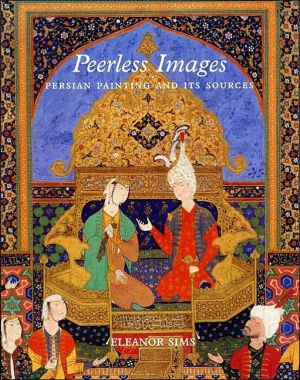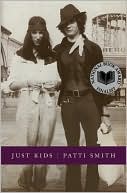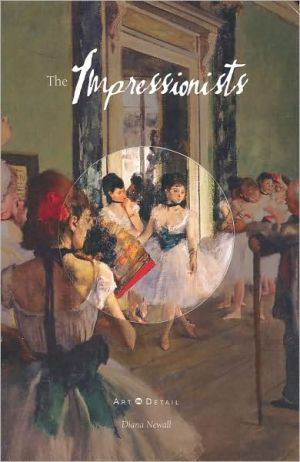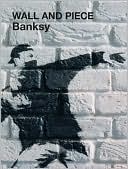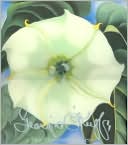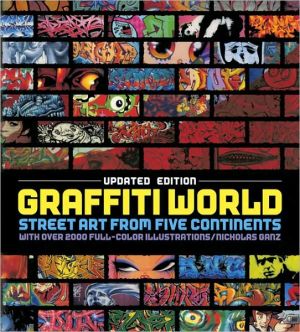Peerless Images: Persian Painting and Its Sources
"This book is the first survey of the figural arts of the Iranian world from prehistoric times to the early twentieth century ever to consider themes, rather than styles. Analyzing primarily painting - in manuscripts and albums, on walls and on lacquered, painted pen boxes and caskets - but also the related arts of sculpture, ceramics, and metalwork, the author finds that the underlying themes depicted on them through the ages are remarkably consistent." "Eleanor Sims demonstrates that all...
Search in google:
"This book is the first survey of the figural arts of the Iranian world from prehistoric times to the early twentieth century ever to consider themes, rather than styles. Analyzing primarily painting - in manuscripts and albums, on walls and on lacquered, painted pen boxes and caskets - but also the related arts of sculpture, ceramics, and metalwork, the author finds that the underlying themes depicted on them through the ages are remarkably consistent." "Eleanor Sims demonstrates that all these arts display similar concerns: kingship and legitimacy; the righteous exercise of princely power and the defense of national territory; and the performance of rituals and the religious duties called for by the paramount cult of the day. She describes a variety of superb works of art inside and outside these categories, noting not only how they illustrate archetypal themes but also what it is about them that is unique. She also discusses the ways that Iranian art both influenced and was influenced by invaders and neighboring lands." Boris I. Marshak discusses pre-Islamic and also Central Asian art, in particular the earliest Iranian wall paintings and their pictorial parallels in rock carvings and metalwork, and the richly painted temples and houses of Panjikent. Ernst J. Grube considers religious imagery, and provides an informative bibliography.Publishers WeeklyAn ambitious endeavor for one publication, this book approaches the near boundless field of Persian painting from a thematic vantage point. A prefatory but comprehensive historical overview, including a discussion of pre-Islamic painting by Russian scholar Marshak, establishes the fundamental chronology of ruling dynasties, invading neighbors and shifting art practices of the Persian world through the early 20th century. Islamic art scholar Sims's decision to organize the volume's sumptuous reproductions of wall paintings, illustrated manuscripts and lacquerware according to motif creates a highly original cultural index for students of Iranian art. Topoi, or archetypes, such as Razm U Bazm (Fighting and Feasting), the Five Pillars of Islam, Night Scenes, and The Scholar explore not only princely and ceremonial themes but formal properties, such as line, color and composition. The book's strength is in the details, namely the hundreds of individual images that have been thoroughly catalogued and researched. Each entry includes a straightforward explication of the artwork and often anecdotal information about the artifact's recovery and preservation. An essay by Grube supplements the section on religious painting in the Islamic period. 15 b&w and 345 full color illus. (Nov. 21) Copyright 2003 Cahners Business Information.
\ Publishers WeeklyAn ambitious endeavor for one publication, this book approaches the near boundless field of Persian painting from a thematic vantage point. A prefatory but comprehensive historical overview, including a discussion of pre-Islamic painting by Russian scholar Marshak, establishes the fundamental chronology of ruling dynasties, invading neighbors and shifting art practices of the Persian world through the early 20th century. Islamic art scholar Sims's decision to organize the volume's sumptuous reproductions of wall paintings, illustrated manuscripts and lacquerware according to motif creates a highly original cultural index for students of Iranian art. Topoi, or archetypes, such as Razm U Bazm (Fighting and Feasting), the Five Pillars of Islam, Night Scenes, and The Scholar explore not only princely and ceremonial themes but formal properties, such as line, color and composition. The book's strength is in the details, namely the hundreds of individual images that have been thoroughly catalogued and researched. Each entry includes a straightforward explication of the artwork and often anecdotal information about the artifact's recovery and preservation. An essay by Grube supplements the section on religious painting in the Islamic period. 15 b&w and 345 full color illus. (Nov. 21) Copyright 2003 Cahners Business Information.\ \ \ \ \ Library JournalA former curator in the Islamic Department at the Metropolitan Museum of Art, Sims presents a lavish panorama of Persian painting from prehistoric times through the 19th century. What is intriguing about this book is its arrangement by theme rather than style. The Persian world experienced many incursions from other cultures, but, despite the stylistic effects and changes from these encroachments, uniquely Persian ideas, themes, and motifs persevered. This book is art history at its finest, allowing the reader a glimpse into the psyche of the culture in question. Stories of animals, kings, war and feasting, and Persian characters connect centuries of Persian art. This volume is a fine complement to other works on Persian art, including Stuart Cary Welch's Persian Painting and Sheila R. Canby's The Golden Age of Persian Art, and it fills a gap in the underrepresented field of Iranian art. With 345 color illustrations, it is recommended for libraries specializing in art history or Middle Eastern studies and for larger public libraries.-Nadine Dalton Speidel, Cuyahoga Cty. P.L., Parma, OH Copyright 2003 Cahners Business Information.\ \
